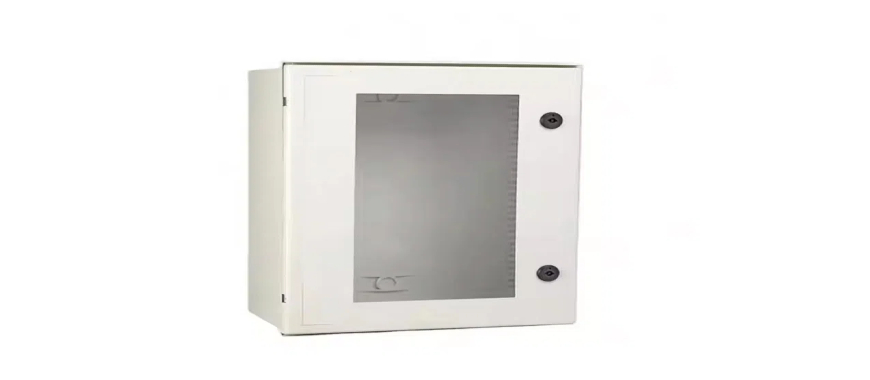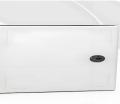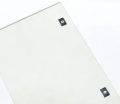
A fiberglass box with heatsink is a specialized enclosure designed for optimal thermal management. It combines the lightweight and durable properties of fiberglass with effective heat dissipation capabilities. These boxes serve various purposes, such as housing electronic components, protecting sensitive equipment, and ensuring reliable operation in harsh environments. The fiberglass box knockout feature is integrated into the design, allowing for easy access to wiring and components while maintaining thermal efficiency. The heatsink helps to regulate temperatures, preventing overheating and prolonging equipment lifespan. In sectors like telecommunications, renewable energy, and industrial automation, the importance of a fiberglass box with heatsink cannot be overstated. These enclosures provide essential protection while enhancing performance, making them vital for modern applications where temperature control is critical.
Key Features of Fiberglass Box with Heatsinks
Fiberglass boxes with heatsinks offer a range of essential features that enhance their utility in various applications. Understanding these features helps users make informed decisions when selecting an appropriate enclosure. Below are some of the key aspects of fiberglass boxes with heatsinks.
Thermal Management Capabilities
Heatsink Functionality: A fiberglass box with heatsink integrates heatsinking technology to efficiently manage heat. This component draws heat away from sensitive equipment, ensuring optimal operating temperatures.
Enhanced Cooling: Effective heat dissipation improves performance and reliability. This is especially critical for electronic devices that generate significant heat during operation.
Prevention of Overheating: Overheating can lead to equipment failure. The heatsink helps prevent this by maintaining temperatures within safe limits.
Application in Electronics: Many electronic devices, such as amplifiers and power supplies, benefit from the thermal management provided by a fiberglass box with heatsink.
Real-World Examples: In telecommunications, these enclosures protect vital equipment while maintaining performance, demonstrating their practical benefits.
Durability and Weather Resistance
Materials Used in Construction: A fiberglass box with heatsink is typically made from high-quality fiberglass. This material is lightweight yet incredibly strong, providing excellent protection against physical damage.
Weatherproofing Features: Many fiberglass boxes are designed to withstand extreme weather conditions. They resist moisture, UV radiation, and corrosion, making them suitable for outdoor use.
Longevity: The durability of fiberglass ensures a long lifespan for the enclosure. This reduces the need for frequent replacements, providing long-term value.
Impact Resistance: Fiberglass can absorb impacts without cracking. This is crucial for applications in rugged environments where equipment may be subjected to physical stress.
Resistance to Chemicals: An industrial fiberglass box with heatsink can resist many chemicals, enhancing its usability in industrial applications where exposure to harsh substances is common.
Versatile Design Options
Customization Features: Users can often customize a fiberglass box with heatsink to meet specific requirements. This can include size, color, and additional features tailored to particular needs.
Modular Design: Many enclosures offer a modular design, allowing users to add or remove components easily. This flexibility can accommodate changing technological needs.
Ventilation Options: Effective ventilation is critical for thermal management. Customizable ventilation options allow for enhanced airflow, further improving cooling.
Cable Management Solutions: Integrated cable management systems keep wiring organized and accessible. This reduces clutter and improves safety.
Aesthetic Appeal: The design of a fiberglass box with heatsink can be made to fit the aesthetic of its environment. This is important for applications in visible locations where appearance matters.
A fiberglass box with heatsink combines thermal management capabilities, durability, and versatile design options. These features make it a valuable solution for protecting equipment in a variety of applications. Whether in telecommunications, industrial settings, or renewable energy, the benefits of these enclosures are clear. Users can achieve optimal performance while ensuring the longevity of their equipment by choosing a fiberglass box with heatsink.
Fiberglass Box with Ears: Essential Features and Benefits
Cost Considerations for Fiberglass Box with Heatsink
When selecting a fiberglass box with heatsink, understanding the cost considerations is essential. Various factors influence the overall price of these enclosures. Evaluating these factors can help users make informed decisions.
Factors Influencing Cost
Size: The dimensions of a fiberglass box with heatsink significantly affect its cost. Larger boxes require more material, which increases the price.
Features: Additional features, such as cooling fans and specialized vents, can raise costs. Users should assess their needs to avoid unnecessary expenses.
Materials: The quality of materials used impacts the overall price. Higher-grade fiberglass may be more expensive but offers better durability.
Customization: Custom designs tailored to specific applications often come at a premium. While customization offers benefits, it can increase costs.
Manufacturing Process: The complexity of the manufacturing process can also influence price. More intricate designs may require additional labor and resources.
Market Trends: Fluctuations in material costs can affect pricing. Staying informed about market trends helps users budget effectively.
Comparison to Other Enclosure Options
| Feature | Fiberglass Box with Heatsink | Metal Enclosures | Plastic Enclosures |
|---|---|---|---|
| Cost | Moderate | High | Low |
| Durability | High | Moderate | Low |
| Weather Resistance | Excellent | Good | Poor |
| Thermal Management | Effective | Limited | Minimal |
| Customization Options | Extensive | Limited | Some |
| Lifespan | Long | Moderate | Short |
Cost-Effectiveness Analysis: A fiberglass box with heatsink offers a balanced cost-to-benefit ratio. While the initial investment may be moderate, long-term durability and efficiency provide substantial savings.
Lifespan Considerations: Investing in a fiberglass box with heatsink often leads to lower replacement costs over time. Their longevity can outweigh the upfront price.
Thermal Efficiency: The effective thermal management of fiberglass boxes can reduce energy costs for cooling systems. This added efficiency enhances overall cost-effectiveness.
The cost considerations for a fiberglass box with heatsink involves evaluating size, features, and materials. The table highlights how these enclosures compare to other options. Users can make informed decisions by analyzing the cost-effectiveness of a fiberglass box with heatsink versus metal and plastic alternatives.
Pricing Overview for Fiberglass Box with Heatsink
Understanding the pricing of a fiberglass box with heatsink is crucial for budget planning. This overview highlights average price ranges and the long-term value of these enclosures.
Average Price Range
General Pricing Expectations: A fiberglass box with heatsink typically falls within a moderate price range. Prices can vary based on size, features, and materials used.
Standard Sizes: Standard models usually start at a lower price point. Larger or custom units generally command higher prices.
Feature Impact: Additional features, such as integrated cooling fans or enhanced weatherproofing, increase the cost. Users should assess which features are necessary for their applications.
Market Variability: Prices can fluctuate based on market demand and material costs. Staying updated on trends can help users make better purchasing decisions.
Examples of Pricing: Basic models may start around $200, while more complex configurations can exceed $1,000. Evaluating specific needs can clarify the expected price.
Long-term Value vs. Initial Investment
Cost-Benefit Analysis Over Time: Evaluating the long-term value of a fiberglass box with heatsink is essential. Initial costs should be weighed against future savings and durability.
Longevity: A fiberglass box with heatsink typically offers a long lifespan. This reduces replacement frequency and overall costs in the long run.
Energy Efficiency: Effective thermal management can lead to energy savings. Lower cooling costs contribute to overall financial benefits.
Maintenance Costs: Minimal maintenance is required for fiberglass enclosures. This further enhances long-term value by reducing upkeep expenses.
Real-World Case Studies: Businesses using fiberglass boxes with heatsinks report lower operational costs. Enhanced durability and efficiency lead to significant savings over time.
The pricing overview for a fiberglass box with heatsink reveals moderate initial costs. By considering average price ranges and long-term value, users can make informed decisions that align with their budget and needs. The durability and energy efficiency of these enclosures often justify the investment, ensuring reliability for years to come.
Top Uses for Fiberglass Box Surplus in Construction
Choosing the Right Fiberglass Box With Heatsink
Selecting the appropriate fiberglass box with heatsink is crucial for achieving optimal performance. This guide will help users identify their specific needs and ensure compatibility with their equipment.
Application Requirements
Identifying Specific Needs: The first step in choosing a fiberglass box with heatsink involves understanding the specific application. Different industries have varying requirements based on the environment and equipment.
Environmental Factors: Consider environmental conditions, such as temperature, humidity, and exposure to chemicals. A fiberglass box with heatsink should withstand these conditions effectively.
Load Capacity: Evaluate the load capacity required for your equipment. Ensure the enclosure can support the weight and size of the components housed inside.
Thermal Management Needs: Assess the thermal management requirements based on equipment usage. A fiberglass box with heatsink provides effective cooling for high-heat-generating devices.
Accessibility: Determine how often users will need to access the equipment. Design features like removable panels or doors may enhance usability.
Regulatory Compliance: Check any industry standards or regulations that apply to your application. Ensure that the chosen fiberglass box with heatsink meets these requirements.
Budget Considerations: Finally, establish a budget. While it’s important to choose a suitable enclosure, finding a cost-effective solution is also essential.
Compatibility with Equipment
Ensuring Proper Fit and Functionality: Compatibility is key when selecting a fiberglass box with heatsink. Proper fit ensures optimal performance and protection for equipment.
Dimensions and Layout: Measure the dimensions of the equipment to ensure a proper fit. The internal layout of the fiberglass box with heatsink should accommodate all components comfortably.
Ventilation Needs: Consider the ventilation requirements of the equipment. The fiberglass box with heatsink should allow for adequate airflow to prevent overheating.
Cable Management: Ensure there are sufficient openings for cable management. Proper routing of cables enhances organization and reduces the risk of damage.
Mounting Options: Check for appropriate mounting options within the enclosure. This allows for secure placement of equipment, which is essential for stability and safety.
Accessory Compatibility: If additional accessories are needed, such as cooling fans or power strips, ensure they can fit within the fiberglass box with heatsink. This prevents future compatibility issues.
Testing and Validation: Once a fiberglass box with heatsink is selected, conduct tests to ensure it meets all functional requirements. This may involve load testing and thermal assessments.
Choosing the right fiberglass box with heatsink requires careful consideration of application requirements and compatibility with equipment. By assessing environmental factors, load capacity, and regulatory compliance, users can identify their specific needs. Ensuring proper fit and functionality is equally important. Dimensions, ventilation, cable management, and mounting options all play critical roles in making the right choice. With thorough evaluation, users can select an enclosure that provides optimal performance and protection for their equipment.
Leading Fiberglass Box With Heatsink Manufacturers
At GangLong Fiberglass, we take pride in offering high-quality fiberglass boxes with heatsinks designed to meet diverse industry needs. Our commitment to innovation and durability sets us apart in the fiberglass enclosure market. Here’s an overview of the market and tips for selecting a reliable manufacturer.
Overview of the Market
Key Players: The fiberglass enclosure market features several key players known for their specialized offerings. Each manufacturer brings unique strengths and product lines to the table.
Product Range: Many companies provide a variety of enclosures, including weatherproof, vented, and insulated models. A fiberglass box with heatsink is often among the popular options.
Industry Applications: Fiberglass enclosures are widely used in sectors like telecommunications, renewable energy, and industrial automation. Each application requires specific features and designs.
Market Trends: The market is experiencing growth due to increasing demand for durable and reliable enclosures. Businesses prioritize long-lasting solutions for their equipment.
Technology Advancements: New technologies in manufacturing processes enhance the performance and features of fiberglass boxes. Innovations like improved thermal management and customization options are becoming standard.
Customer Needs: Understanding customer needs is crucial for manufacturers. Companies focus on providing solutions that meet specific operational requirements and budget constraints.
Selecting a Reliable Manufacturer
Criteria for Evaluation: Choosing a reliable manufacturer for a fiberglass box with heatsink requires careful evaluation. Consider the following criteria when making your selection.
Quality Standards: Ensure the manufacturer adheres to high-quality standards. Certifications and industry compliance can indicate a commitment to excellence.
Customization Options: Look for manufacturers that offer customization. A fiberglass box with heatsink should meet your specific requirements for size, features, and performance.
Reputation and Experience: Evaluate the manufacturer’s reputation in the market. Experience can indicate reliability and expertise in producing quality enclosures.
Customer Support: Strong customer support is essential. A reliable manufacturer should provide assistance before, during, and after the purchase process.
Warranty and Guarantees: Check if the manufacturer offers warranties or guarantees. This adds an extra layer of assurance regarding the quality and durability of their products.
Feedback and Reviews: Research customer feedback and reviews. Positive testimonials can provide insight into the manufacturer’s track record and product satisfaction.
GangLong Fiberglass stands out among leading fiberglass enclosure manufacturers. Understanding the market landscape and selecting a reliable manufacturer is vital for finding the right fiberglass box with heatsink. By focusing on quality, customization, reputation, and support, customers can make informed decisions that ensure long-term satisfaction and reliability in their enclosures.
Fiberglass Box Salvage Tips and Best Practices
Additional Options: Fiberglass Box with Lid
When considering a fiberglass box with heatsink, users may also explore options that include a lid. A lid can enhance both protection and functionality, making it a valuable addition.
Benefits of Having a Lid
Added Protection: A fiberglass box with heatsink featuring a lid offers extra protection against environmental elements. This includes dust, moisture, and UV exposure.
Enhanced Security: A lid can help secure valuable equipment inside the enclosure. It prevents unauthorized access and reduces the risk of tampering.
Improved Thermal Management: Lids can be designed to enhance airflow while still providing thermal management. This ensures that equipment remains cool during operation.
Weather Resistance: A lid enhances the weatherproofing of the enclosure. This is crucial for outdoor applications where exposure to rain and wind can be a concern.
Versatility in Applications: A fiberglass box with heatsink and lid can be used in various settings. This includes telecommunications, renewable energy, and industrial applications.
Examples of Use: In harsh industrial environments, lids protect sensitive electronics from debris and moisture. This increases the lifespan and reliability of the equipment housed inside.
Design Considerations
Customization Possibilities: A fiberglass box with heatsink can be customized with different lid designs. This allows for tailored solutions that meet specific needs.
Access Options: Consider the type of access required for the enclosure. Hinged, removable, or locking lids can provide flexibility based on user requirements.
Ventilation Features: Design lids with ventilation options to promote airflow. Proper ventilation is essential for maintaining optimal temperatures inside the enclosure.
Material Choices: The material used for the lid should match the durability of the box. This ensures that both components work together effectively.
Size and Shape: Ensure that the lid fits securely on the fiberglass box with heatsink. Proper sizing prevents gaps that could compromise protection.
Aesthetic Considerations: The design of the lid can also contribute to the overall look of the enclosure. Aesthetically pleasing designs may be important in visible locations.
Incorporating a lid into a fiberglass box with heatsink can provide numerous benefits. From enhanced protection to improved functionality, a lid is a valuable feature. By considering customization options and design features, users can create an enclosure that meets their specific requirements. This combination of practicality and versatility makes the fiberglass box with heatsink and lid an excellent choice for various applications.
The Advantages of Fiberglass Box with Heatsinks
A fiberglass box with heatsink offers numerous benefits and features that enhance equipment protection and performance. Understanding these aspects can help users make informed decisions.
Summary of Benefits and Features:
A fiberglass box with heatsink provides effective thermal management, ensuring optimal operating conditions for sensitive equipment.
The durable construction resists environmental factors such as moisture, dust, and UV radiation. This durability enhances longevity and reduces maintenance needs.
Customization options allow users to tailor the enclosure to specific application requirements. This flexibility ensures a perfect fit for various environments and equipment.
Security features, such as locking mechanisms and additional lids, provide enhanced protection against unauthorized access. This is especially valuable in sensitive or high-risk locations.
The versatility of a fiberglass box with heatsink makes it suitable for various industries, including telecommunications, renewable energy, and industrial automation.
Encouragement to Explore Options for Specific Needs:
As users consider their requirements, exploring different fiberglass box with heatsink options is crucial. Assessing specific application needs can lead to better outcomes.
Review the features and customization possibilities available. This ensures the chosen enclosure meets all functional and aesthetic criteria.
Engage with manufacturers or suppliers to discuss specific needs and inquire about tailored solutions. Their expertise can guide users in selecting the most suitable fiberglass box with heatsink.
By carefully evaluating options, users can ensure they invest in a solution that enhances equipment performance and reliability.
A fiberglass box with heatsink represents a valuable investment for any organization. The benefits and features it offers contribute significantly to the protection and efficiency of critical equipment. Exploring all available options ensures the best choice for specific needs.

As the editor of GangLong Fiberglass, I have years of experience and in-depth research, focusing on cable tray products, fiberglass solutions, and grille systems. I incorporate years of industry insights and practical experience into every content, committed to promoting the progress of the industry. At GangLong Fiberglass, my commitment is reflected in every product, from innovative cable trays to durable fiberglass solutions and sturdy grille systems. As an authoritative voice in the industry, my goal is to provide valuable information to professionals and businesses and promote forward-looking solutions.


